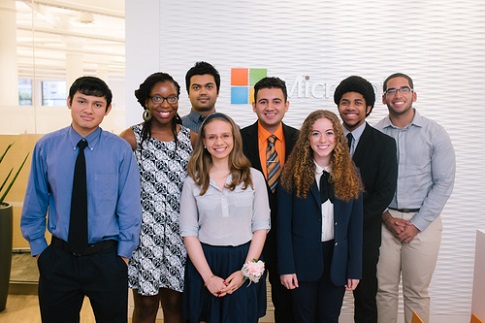Student data science presentations on Citibikes and Stop and Frisk
UNDERGRADUATE SUMMER PROJECTS AT MICROSOFT RESEARCH NYC
This summer, researchers at Microsoft Research NYC launched an outreach program called the Data Science Summer School (DS3 for short) an 8 week, 40 hour per week, hands-on course. It was pretty intense. Eight amazing undergrads were admitted and worked hard all summer. The program culminated in two research projects. The presentations were fantastic. We repost the slides, papers, and videos here for your learning pleasure.
Self-Balancing Bikes
By Briana Vecchione, Franky Rodriguez, Donald Hanson II, Jahaziel Guzman
Bike sharing is an internationally implemented system for reducing public transit congestion, minimizing carbon emissions, and encouraging a healthy lifestyle. Since New York City’s launch of the CitiBike program in May 2013, however, various issues have arisen due to overcrowding and general flow. In response to these issues, CitiBike employees redistribute bicycles by vehicle throughout the New York City area. During the past year, over 500,000 bikes have been redistributed in this fashion. This solution is financially taxing, environmentally and economically inefficient, and often suffers from timing issues. What if CitiBike instead used its clientele to redistribute bicycles?
In this talk, we describe the data analysis that we conducted in hopes of creating an incentive and rerouting scheme for riders to self-balance the system. We anticipate that we can decrease vehicle transportations by offering financial incentives to take bikes from relatively full stations and return bikes to relatively empty stations (with rerouting advice provided via an app). We used publicly available data obtained via the CitiBike website, consisting of starting and ending locations, times, and user characteristics for each trip taken from July 2013 through May 2014. Using this dataset, we estimated CitiBike traffic flow, which enabled us to build agent-based simulation models in response to incentives and rerouting information. By estimating various parameters under which to organize incentive schemes, we found that such a program would help to improve CitiBike’s environmentalism and increase productivity, as well as being financially beneficial for both CitiBike and its riders.
For more details, please see the paper and talk.
An Empirical Analysis of Stop-and-Frisk in New York City
By Md.Afzal Hossain, Khanna Pugach, Derek Sanz, Siobhan Wilmot-Dunbar
Between 2006 and 2012, the New York City Police Department made roughly four million stops as part of the city’s controversial stop-and-frisk program. We empirically study two aspects of the program by analyzing a large public dataset released by the police department that records all documented stops in the city. First, by comparing to block-level census data, we estimate stop rates for various demographic subgroups of the population. In particular, we find, somewhat remarkably, that the average annual number of stops of young, black men exceeds the number of such individuals in the general population. This disparity is even more pronounced when we account for geography, with the number of stops of young black men in certain neighborhoods several times greater than their number in the local population. Second, we statistically analyze the reasons recorded in our data that officers state for making each stop (e.g., “furtive movements” or “sights and sounds of criminal activity”). By comparing which stated reasons best predict whether a suspect is ultimately arrested, we develop simple heuristics to aid officers in making better stop decisions. We believe our results will help both the general population and the police department better understand the burden of stop-and-frisk on certain subgroups of the population, and that the guidelines we have developed will help improve stop-and-frisk programs in New York City and across the country.


